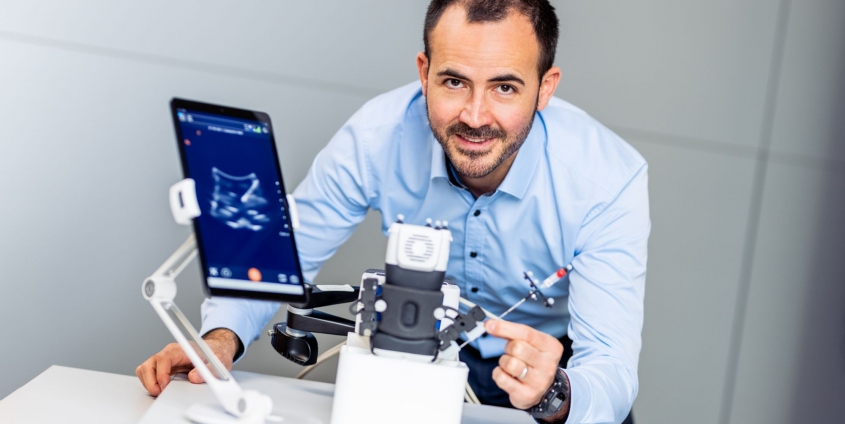Intelligent surgical robots are validated in cooperation with KABEG
Assistive robots are already in use in many operating theatres. However, they are often only used as teleoperators or assistants that hold and direct tools. Researchers at the University of Klagenfurt are working on new technologies that will enable robots to perform new tasks during operations. The algorithms developed in recent years are now being validated in cooperation with KABEG.
“At present, the potential for using robots in surgery is still very limited. They can usually only restrict or correct human action,” notes project leader Jan Steinbrener, who conducts research in this area together with his colleague Stephan Weiss (both from the Institute of Smart Systems Technologies). This means that the autonomy of the robots still remains at a very low level.
“Let’s picture an operation on a soft tissue site, where unforeseen organ movements can often occur. Using the technology currently available, the attending surgeon needs to be constantly alert in order to intervene if something goes wrong. So the benefits of automation are very limited,” Steinbrener continues. A safe and effective robotic system (with greater autonomy for the robots) should therefore not only be able to perform the task under challenging and shifting conditions, but must also be able to recognise when intervention by the human hand is required. Steinbrener elaborates: “If the ‘perceived’ uncertainty of the robot exceeds a threshold value, the robot must reliably recognise this and alert a supervising surgeon. Regardless of the technological challenges, legal and ethical issues must always be considered in this context.
The aim of the research work is to lay the foundations for the next generation of assistive surgical systems. Preliminary success has already been achieved on many levels. For example, the team is working on intelligent algorithms so that images and potential anomalies contained therein can be interpreted correctly. Researchers are also working on algorithms for modular multi-sensor fusion that can utilise the data provided by all sensors, including any uncertainties, to determine the position of the surgical instrument inside the body.
In order for these new technologies to continue learning, key real-world experience is needed. The research team is therefore cooperating with KABEG (Thomas Kau, Institute for Radiological Diagnostics and Intervention, Villach Regional Hospital). Thomas Kau and his team are providing their know-how to validate the algorithms trained using simulated data.










 Foto: Daniel Waschnig
Foto: Daniel Waschnig
